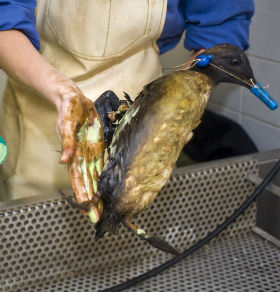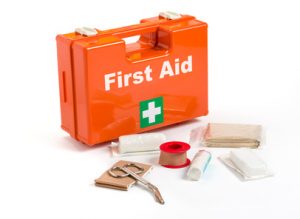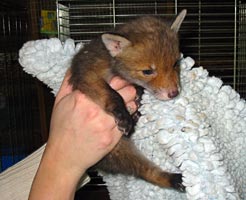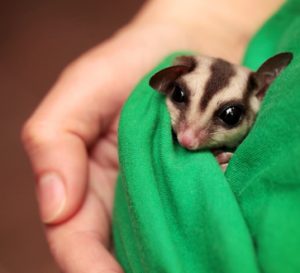Level 3 Diploma in British Wildlife Rehabilitation Studies
-
The Level 3 Diploma in British Wildlife Rehabilitation Studies has been designed to suit those working, or wanting to work, in careers related to British wildlife care and rehabilitation.
-
The qualification looks at how to capture, treat and release injured wildlife along with the importance of recording and monitoring British wildlife species.
Learning is flexible and study is conducted online with the support of a dedicated tutor.
What you will study
During the qualification you will study:
- The rehabilitation of British wildlife.
- Examining, handling and restraining methods, along with capture and release techniques.
- The methods used to assess and treat an injured wild animal, including first aid, and how and when euthanasia is appropriate.
- The relevant legislation and external agencies involved in working in the rehabilitation of British wild animals.
- How and why to monitor and record wildlife populations in different ways.
The Level 3 Diploma in British Wildlife Rehabilitation Studies includes a 5 day practical placement at East Sussex Wildlife Rescue and Ambulance Service (WRAS). The placement is designed to give students plenty of hands-on experience in different aspects of wildlife rehabilitation and provides an insight into how a wildlife rescue centre works.
During a typical placement week, students get to experience rescues of injured animals and releasing healthy animals back into the wild. Whether you are looking to become a Vet, a Zookeeper, work in conservation or rescue work in the future, this is the best place to gain valuable first-hand experience!
Module 1
Hygiene Requirements and the Health of British Wild Animals
The learner will develop an understanding of the health and safety considerations which should be made when working with British wild animals alongside understanding the hygiene standards which should be maintained and how to maintain them. Learners will also develop an understanding of the common diseases which affect British wildlife, including how disease is transmitted, the signs and symptoms of disease and how disease can be treated.
Module 2
Principles of Handling and Restraining British Wild Animals
Learners will gain knowledge of how to handle and, where necessary, restrain a variety of British wildlife animals and the methods and techniques which should be used, including the risks, clothing and equipment and the legal considerations which must be made. The learner will also understand the limitations of handling and restraint and consider the related ethical issues posed in the handling and restraint of wildlife.
Module 3
Legislation and Agencies Involved in British Wildlife Rehabilitation
Learners will gain an understanding of the legislation related to rehabilitating a range of British wildlife species. The Learner will also develop an understanding of a range of agencies involved in British wildlife rehabilitation, their work and how this work contributes to rehabilitation efforts.
Module 4
Principles of First Aid for British Wild Animals
The learner will understand the principles of wild animal first aid, knowing how to identify a need for first aid in an animal and the equipment needed to maintain an animal first aid kit. The Learner will also understand when wild animal first aid can be used, the legal requirements and codes of practice relating to wild animal first aid and the principles of wild animal euthanasia in relation to British wildlife.
Module 5
Principles of Assessment and Treatment of Injured Wildlife
Learners will develop an understanding of how to initially assess the vital signs in wildlife casualties, the signs of injury and appropriate treatment methods. Learners will also understand how an injured animal should be housed and fed and how veterinarian diagnoses are made.
Module 6
Principles of Wild Animal Capture and Release Techniques
The learner will understand the methods and reasons for the capture of British wild animals, as well as the methods and reasons for the release of British wild animals. Learners will also understand the impact human intervention can have on wild animals and the associated ethical issues.
Module 7
Principles of Monitoring and Recording British Wildlife Species
The learner will understand the reasons for monitoring and recording British wildlife populations and the methods used. The learner will also understand how to carry out monitoring and recording of British wildlife populations.
Career Progression
This qualification is ideal if you work in, or intend to enter, a career in British wildlife care and rehabilitation. You may choose to progress onto higher level study, practical occupational training, a volunteering position or a career in British wildlife care and welfare or conservation.
Wildlife rehabilitation is a growing career sector. Wildlife Rehabilitators can work in a variety of settings and with a variety of organisations including:
- Government agencies.
- Wildlife and conservation charities.
- Zoos.
- Veterinary services.
- Specialised emergency and disaster response teams.
You may go on to choose to work with specific species, such as:
- Birds of prey.
- Small mammals.
- Reptiles and amphibians.
Wildlife Rescue Course Principle 1: Preserve life
Preserving life (or preventing death) can be considered the primary goal of the first- aider. In most emergencies, where an animal has sustained an injury or has been found in a life-threatening situation, the goal of preserving life is paramount.
Depending on the context of the situation, concepts such as ‘healing’ or ‘rehabilitation’ are medium-term goals secondary to the immediate aim of keeping the animal alive. The specific actions and techniques necessary to meet this goal will depend on the situation.
Wildlife Rescue Course Principle 2: Maintain life until professional treatment is available
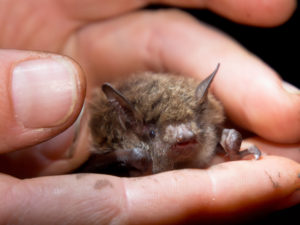
When the immediate threat to life has been averted or removed, the next goal of the first-aider is always to maintain life. This means stabilising the casualty until a veterinary professional arrives at the scene or takes custody of the animal.
The veterinary professional will have access to medicines, resources, equipment and skills that far exceed the usual resources of a first aider, so it is important that your animal casualty receives professional attention as soon as possible.
In many cases, however, there may be a critical time delay between your initial response to the emergency and the availability of professional attention. During this time, you must be vigilant to ensure that the casualty’s condition does not deteriorate, and that the animal is not at risk of any further harm. This is especially important if, in this interval, you need to transport the animal to a veterinary clinic. Transportation is a traumatic experience for any wild animal.
Wildlife Rescue Course Principle 3: Prevent further harm, pain or stress
The natural reaction is to hide or flee, but because of injury (or because they is in your custody) the animal is unable to do so and this causes extreme stress.
Therefore, one of the primary considerations for anyone administering first aid to a wild animal is to minimise stress levels as much as possible, and to prevent further pain. Key to achieving this is to keep handling to a minimum. When it is necessary to handle the animal, it is usually best to do so calmly, firmly and gently. Remember that the biggest risk of further pain for a wild animal is from its own struggling and attempts to flee. In general, the less an afflicted animal can see or hear about what is happening during rescue, the less stressed the animal will become.
Wildlife Rescue Course Principle 4: Prevent harm to human helpers
When we consider human helpers, we include all people associated with the capture, restraint, transportation and treatment of the casualty. This includes you as the primary first-aider on the scene as well as any other people helping you, or even bystanders. It is important to remember that a wild animal is likely to see all humans in its vicinity as potential predators. If it is unable to escape from the situation, it may react with aggression. When fuelled by the extreme stress of capture, this aggression may be shocking in its speed, ferocity and unpredictability. Be aware that the animal may be ‘acting’ calm in an instinctive attempt to deceive you into lowering your defences. Be prepared for an aggressive reaction at any time.
We must remember that wild animals are unlikely to welcome your presence, regardless of how much trouble they are in or how good your intentions are. Interacting with humans is often terrifying for injured wildlife.
*You will have access to the course for 12 months only, after which, you can purchase extensions.
We offer a selection of accredited and employer recognised courses specifically designed for careers working with animals.
If you have any questions about our courses, please contact us.
We’ve assisted many people to achieve their goal to work with animals. Read more about our 5-star reviews and student success stories.
Gain relevant training to achieve your goal to work with animals.



